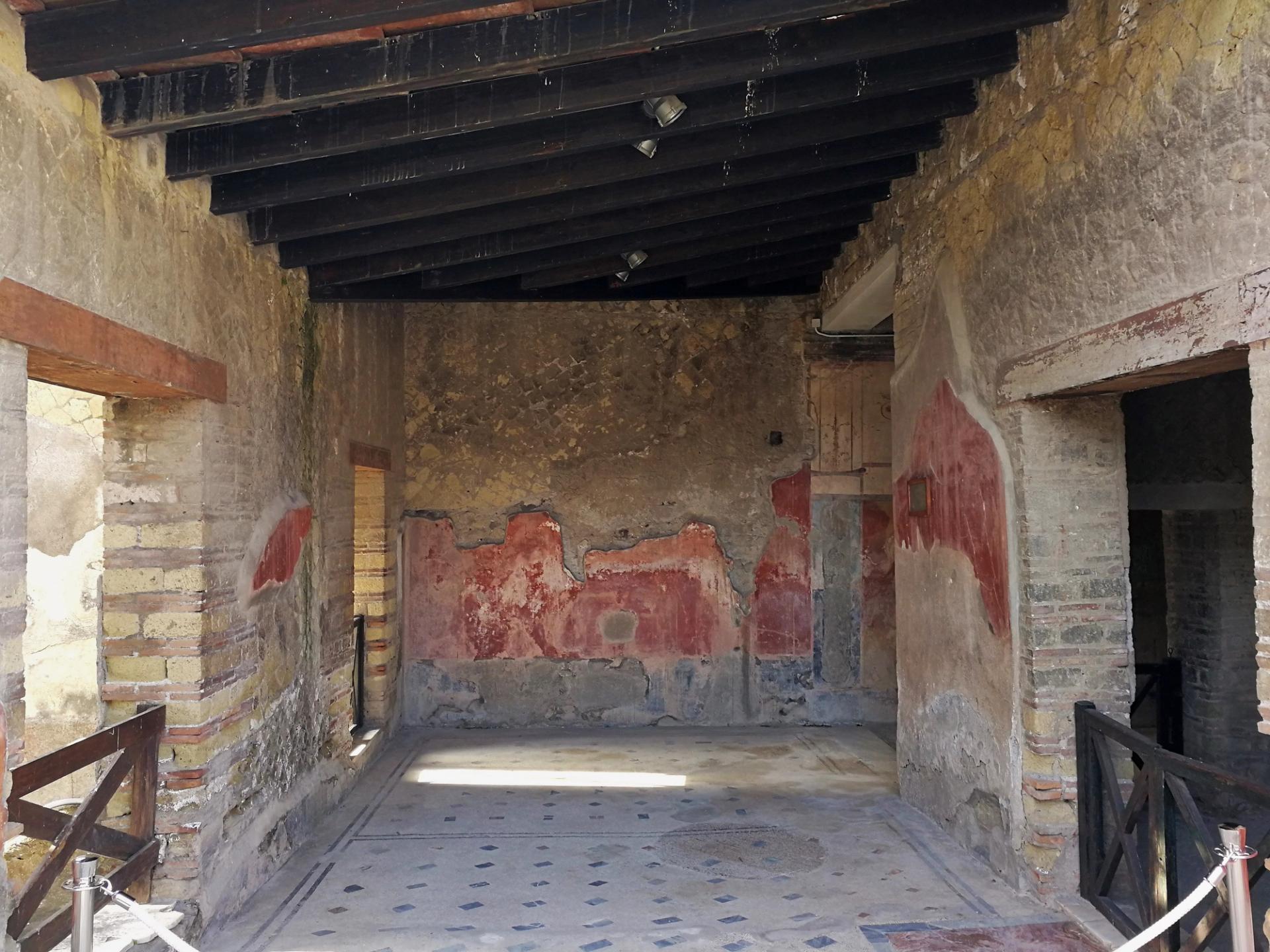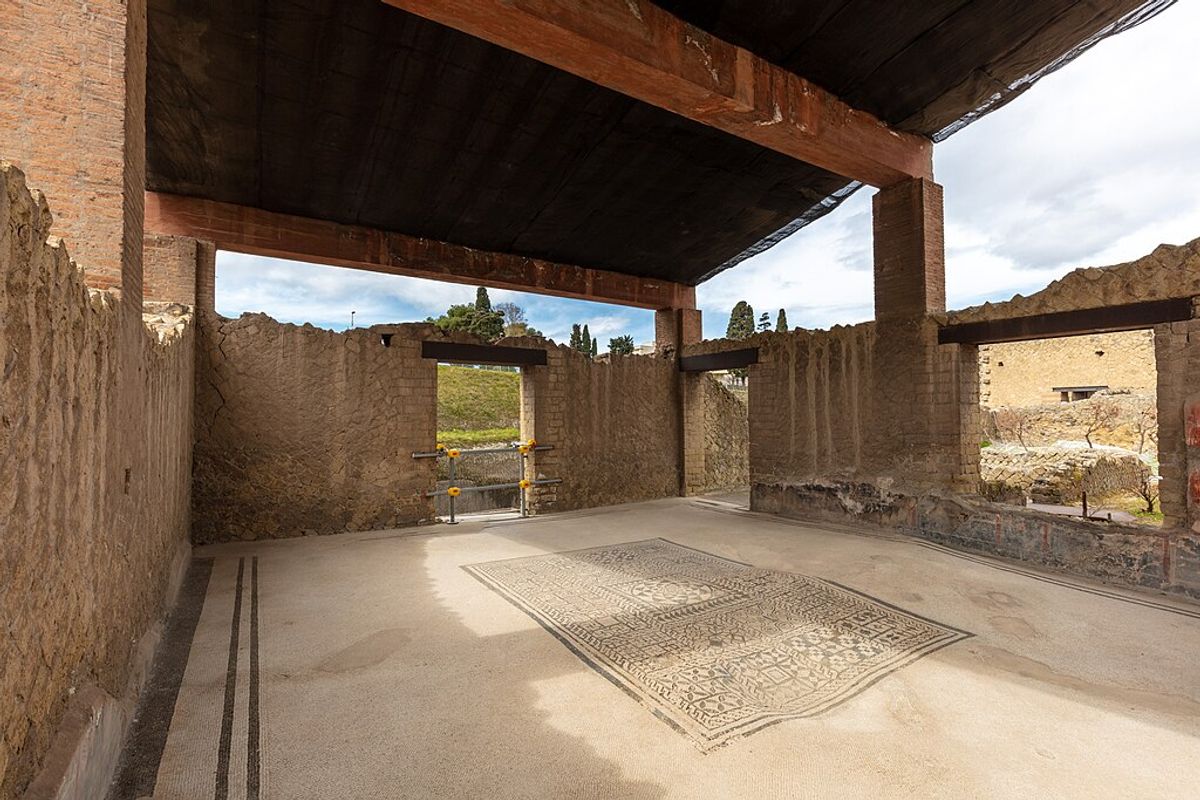The archaeological park of Herculaneum in Campania, Italy, has reopened one of its most spectacular ancient dwellings for four months only, as part of ongoing efforts to ramp up visitor numbers while preserving ancient heritage for future generations.
The Casa della Gemma (house of the gem) is thought to have been inhabited by the family of Roman proconsul Marco Nonio Balbo, and takes its name from a gem believed to have been found there, engraved with the portrait of a woman from the time of the emperor Claudius. By the Augustan age, the domus extended across 1,800 sq m on three levels, making it the second largest home in the Herculaneum. Today, it is known for its spectacular floor mosaics, well-preserved frescoes and walls painted in Pompeian red.

Another room in Casa della Gemma, with the walls painted Pompeian red
Photo: Wikimedia Commons
While the domus was discovered by archaeologists in 1934, it was only opened to the public in 2022 for a four-month trial. It has periodically been opened and closed since then.
Now visitors can once again feast their eyes on the space during mornings until 8 April. “We are pleased to announce [we are] gradually reopening the various domus, starting with the Casa della Gemma,” said Francesco Sirano, director of the archaeological park, in a note. “The cyclical opening of this and other buildings makes it possible to reduce the wear and tear caused by constant tourist pressure, thus distributing visitor flows throughout the site and at different times of the year.”
What happened to Herculaneum?
Situated less than 10km from Naples, the ancient coastal city of Herculaneum was, like nearby Pompeii, smothered by pumice and ash after Mount Vesuvius erupted in AD79—killing many inhabitants. The ash helped to preserve the city, offering archaeologists rare snapshots of ancient life. Parts of the site have been excavated since at least the early 18th century but mismanagement caused it to fall into disrepair in the 1980s.
In 2001, Packard Humanities Institute, a California-based conservation non-profit, began the Herculaneum Conservation Project, which is aimed at helping public authorities to develop a long-term plan for the site. Since its foundation in 2016, the Herculaneum Archaeological Park, which manages part of a Unesco heritage site also comprising the archaeological areas of Pompeii and Torre Annunziata, has gradually reopened more landmarks to the public, including the ancient theatre in 2018, the lavishly decorated Casa del Bicentenario the following year and the ancient city’s beach area in June of last year.
In 2023, 560,000 people visited Herculaneum—a new record for the site, albeit far fewer than the nearly four million who flocked to Pompeii that year.


